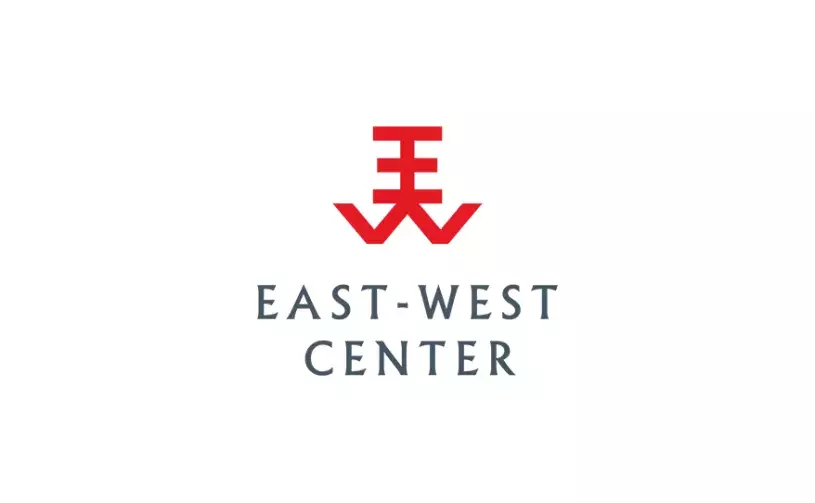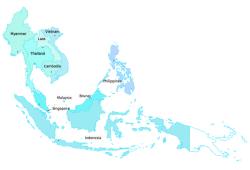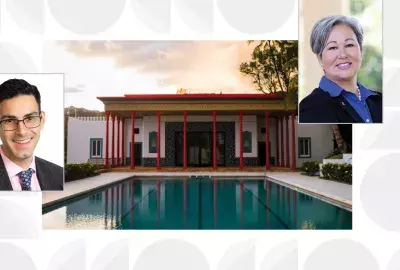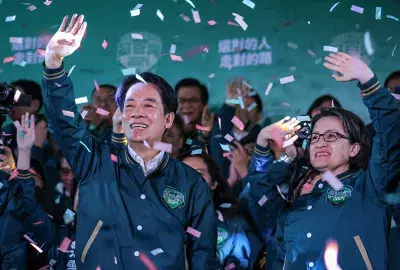Error message

By East-West Center
HONOLULU (October 4, 2019)—President Donald Trump first laid out a vision for a “free and open Indo-Pacific” at the November 2017 Asia-Pacific Economic Cooperation (APEC) Summit in Vietnam. From the start, statements describing the emerging US Indo-Pacific strategy have recognized the central role of Southeast Asia.
The US approach to the Indo-Pacific focuses on three vital areas: enhancing shared prosperity, championing good governance and civil society, and ensuring a peaceful and secure regional order. Two recent visitors to the East-West Center described the potential role of the 10-member Association of Southeast Asian Nations (ASEAN) in the US Indo-Pacific strategy and spelled out several steps that the United States needs to take to strengthen US-ASEAN collaboration.
Why is a strong ASEAN important?

Anu Anwar, a Research Fellow at the Asia-Pacific Center for Security Studies (APCSS) and a Visiting Scholar at the East-West Center, stressed that “ASEAN, as an integrated group of more than half a billion people, is a significant economic power that can help balance the influence of India and China.” Acclaimed journalist Kavi Chongkittavorn is a Senior Fellow with the Institute of Security and International Studies in Bangkok and was a recent Visiting Fellow at the East-West Center. He pointed out that ASEAN’s stated goals in the Indo-Pacific, “emphasizing dialogue and cooperation instead of rivalry, respect for international law, and economic development and prosperity for all,” overlap broadly with US strategy in the region.
Anwar emphasized the importance of a unified ASEAN in standing up to China’s expansionist ambitions. “The small and medium-sized nations of Southeast Asia are in a vulnerable position if they try to defend their sovereignty and territorial integrity on an individual basis,” he pointed out. “As a collective entity, ASEAN’s position is much stronger.” A united ASEAN also advances US interests in the Indo-Pacific region by “protecting the regional balance of power, stability, and rule-based order,” Anwar added.
How can the United States strengthen ties with ASEAN?
In a competition between China and the United States, ASEAN will not formally choose sides, according to Kavi, but the Association’s members “often leans toward the United States without saying so.” Today, however, there is a perception in the region that “America is in decline,” and the positive attitude toward the United States is under threat.
Kavi warned that Trump’s withdrawal from the Paris Agreement on Climate Change and from the Trans-Pacific Partnership “have raised concerns in Southeast Asia that the United States is not a fully reliable strategic partner.” Doubts were heightened by Trump’s absence from important ASEAN meetings. “When he visited the Philippines in November 2017 to attend the ASEAN-sponsored East Asia Summit, he decided to return to Washington after the second day, skipping the leader-only strategic forum,” added Kavi. Then in 2018, “Singapore, one of the closest US allies, tried hard to lobby Trump to join the year-end East Asia Summit. Instead, he sent Vice President Mike Pence, much to the chagrin of ASEAN leaders.”
Anwar and Kavi mentioned several steps that the United States needs to take to ensure stronger working relations with ASEAN. “First,” Anwar stressed, “the United States needs to display a genuine interest in Southeast Asia for its own sake. If it appears that the United States is proposing an Indo-Pacific strategy simply to counter China rather than to support the region’s development, the Americans will be unconvincing as strategic partners.” He added, “The United States should lead with a strong image of what it is for, not what it is against.”
As an indication of genuine interest in the region, Kavi emphasized that “the President of the United States should attend the annual East Asia Summit.” Specifically, “eight months into its chairmanship of ASEAN, Thailand’s biggest challenge remains how to convince President Trump to attend the ASEAN-sponsored East Asia Summit in Bangkok in early November 2019. As the leader of the world’s most powerful nation, Trump’s attendance is pivotal to the chair’s and ASEAN’s success.”
In addition to presidential visits, Anwar added that the United States and ASEAN nations should hold regular summits “where senior ministers and military leaders can confirm the importance of their partnerships and coordinate their positions within the World Trade Organization, APEC, and other regional organizations.”
Direct foreign investment is another important issue. Kavi pointed out that “US investment in Southeast Asia has gone down over the past two years, while China’s investment has doubled.” Anwar emphasized that “infrastructure development—whether in roads, ports, or telecommunications—is an essential need throughout the region, and all Southeast Asian governments are seeking international assistance.”
China is offering substantial financing for infrastructure projects through its Belt and Road Initiative (BRI), raising concerns in the United States. “But without offering a viable alternative, discouraging Southeast Asian countries from taking BRI finance is unconvincing,” according to Anwar. Kavi called especially for “high-quality investments in infrastructure and the green economy.” Anwar added that “US investments can both meet the needs of ASEAN countries and build US reliability as a development partner.”
The United States should also negotiate an effective free-trade agreement with ASEAN, according to Anwar. “ASEAN already has free-trade agreements with China, Japan, South Korea, India, Australia, and New Zealand. The United States should be playing a leading role, rather than being the odd man out.”
Both Kavi and Anwar emphasized that the United States should also strengthen its ties to ASEAN through “soft power,” building trust and engagement across a wide range of civil society. Kavi pointed to two successful US programs initiated under President Obama—the Young Southeast Asian Leaders Initiative (YSEALI) and the US-ASEAN Connect project that focuses on the business community. Building on these initiatives, Anwar stressed that “much more can and should be done across all dimensions of society, from culture and sports to science.”
Summing up how to make “ASEAN-US ties great again,” Kavi listed seven priorities for the Trump administration:
- Attend the annual ASEAN-sponsored East Asia Summit
- Establish personal rapport with ASEAN leaders
- Participate actively in all ASEAN-led mechanisms, including the ASEAN Regional Forum, the ASEAN Defense Ministerial Meeting Plus, and the Lower Mekong Initiative
- Appoint an American envoy to ASEAN, a position that has been vacant for more than 30 months
- Maintain the ASEAN-focused programs and activities initiated under previous US administrations
- Expand educational, cultural, and youth programs
- Strengthen the US-ASEAN security commitment, in particular maritime and cyber security
###
Kavi Chongkittavorn can be reached at [email protected]. Anu Anwar can be reached at [email protected].
Download a pdf version of this Wire article.
The East-West Wire is a news, commentary, and analysis service provided by the East-West Center in Honolulu. All or any part of the Wire content may be used by media with attribution to the East-West Center or the person quoted. To receive Wire articles via email, subscribe here. For links to all East-West Center media programs, fellowships and services, see EastWestCenter.org/Journalists.
The full list of East-West Wires produced by the Research Program is available on the East-West Center website at EastWestCenter.org/Research-Wire. For more on the East-West Center Research Program, see EastWestCenter.org/Research.
The East-West Center promotes better relations and understanding among the people and nations of the United States, Asia, and the Pacific through cooperative study, research, and dialogue.
Series editors:
Derek Ferrar
[email protected]
Sidney B. Westley
[email protected]
The views expressed do not necessarily reflect the policy or position of the East-West Center or of any other organization.
By East-West Center
HONOLULU (October 4, 2019)—President Donald Trump first laid out a vision for a “free and open Indo-Pacific” at the November 2017 Asia-Pacific Economic Cooperation (APEC) Summit in Vietnam. From the start, statements describing the emerging US Indo-Pacific strategy have recognized the central role of Southeast Asia.
The US approach to the Indo-Pacific focuses on three vital areas: enhancing shared prosperity, championing good governance and civil society, and ensuring a peaceful and secure regional order. Two recent visitors to the East-West Center described the potential role of the 10-member Association of Southeast Asian Nations (ASEAN) in the US Indo-Pacific strategy and spelled out several steps that the United States needs to take to strengthen US-ASEAN collaboration.
Why is a strong ASEAN important?

Anu Anwar, a Research Fellow at the Asia-Pacific Center for Security Studies (APCSS) and a Visiting Scholar at the East-West Center, stressed that “ASEAN, as an integrated group of more than half a billion people, is a significant economic power that can help balance the influence of India and China.” Acclaimed journalist Kavi Chongkittavorn is a Senior Fellow with the Institute of Security and International Studies in Bangkok and was a recent Visiting Fellow at the East-West Center. He pointed out that ASEAN’s stated goals in the Indo-Pacific, “emphasizing dialogue and cooperation instead of rivalry, respect for international law, and economic development and prosperity for all,” overlap broadly with US strategy in the region.
Anwar emphasized the importance of a unified ASEAN in standing up to China’s expansionist ambitions. “The small and medium-sized nations of Southeast Asia are in a vulnerable position if they try to defend their sovereignty and territorial integrity on an individual basis,” he pointed out. “As a collective entity, ASEAN’s position is much stronger.” A united ASEAN also advances US interests in the Indo-Pacific region by “protecting the regional balance of power, stability, and rule-based order,” Anwar added.
How can the United States strengthen ties with ASEAN?
In a competition between China and the United States, ASEAN will not formally choose sides, according to Kavi, but the Association’s members “often leans toward the United States without saying so.” Today, however, there is a perception in the region that “America is in decline,” and the positive attitude toward the United States is under threat.
Kavi warned that Trump’s withdrawal from the Paris Agreement on Climate Change and from the Trans-Pacific Partnership “have raised concerns in Southeast Asia that the United States is not a fully reliable strategic partner.” Doubts were heightened by Trump’s absence from important ASEAN meetings. “When he visited the Philippines in November 2017 to attend the ASEAN-sponsored East Asia Summit, he decided to return to Washington after the second day, skipping the leader-only strategic forum,” added Kavi. Then in 2018, “Singapore, one of the closest US allies, tried hard to lobby Trump to join the year-end East Asia Summit. Instead, he sent Vice President Mike Pence, much to the chagrin of ASEAN leaders.”
Anwar and Kavi mentioned several steps that the United States needs to take to ensure stronger working relations with ASEAN. “First,” Anwar stressed, “the United States needs to display a genuine interest in Southeast Asia for its own sake. If it appears that the United States is proposing an Indo-Pacific strategy simply to counter China rather than to support the region’s development, the Americans will be unconvincing as strategic partners.” He added, “The United States should lead with a strong image of what it is for, not what it is against.”
As an indication of genuine interest in the region, Kavi emphasized that “the President of the United States should attend the annual East Asia Summit.” Specifically, “eight months into its chairmanship of ASEAN, Thailand’s biggest challenge remains how to convince President Trump to attend the ASEAN-sponsored East Asia Summit in Bangkok in early November 2019. As the leader of the world’s most powerful nation, Trump’s attendance is pivotal to the chair’s and ASEAN’s success.”
In addition to presidential visits, Anwar added that the United States and ASEAN nations should hold regular summits “where senior ministers and military leaders can confirm the importance of their partnerships and coordinate their positions within the World Trade Organization, APEC, and other regional organizations.”
Direct foreign investment is another important issue. Kavi pointed out that “US investment in Southeast Asia has gone down over the past two years, while China’s investment has doubled.” Anwar emphasized that “infrastructure development—whether in roads, ports, or telecommunications—is an essential need throughout the region, and all Southeast Asian governments are seeking international assistance.”
China is offering substantial financing for infrastructure projects through its Belt and Road Initiative (BRI), raising concerns in the United States. “But without offering a viable alternative, discouraging Southeast Asian countries from taking BRI finance is unconvincing,” according to Anwar. Kavi called especially for “high-quality investments in infrastructure and the green economy.” Anwar added that “US investments can both meet the needs of ASEAN countries and build US reliability as a development partner.”
The United States should also negotiate an effective free-trade agreement with ASEAN, according to Anwar. “ASEAN already has free-trade agreements with China, Japan, South Korea, India, Australia, and New Zealand. The United States should be playing a leading role, rather than being the odd man out.”
Both Kavi and Anwar emphasized that the United States should also strengthen its ties to ASEAN through “soft power,” building trust and engagement across a wide range of civil society. Kavi pointed to two successful US programs initiated under President Obama—the Young Southeast Asian Leaders Initiative (YSEALI) and the US-ASEAN Connect project that focuses on the business community. Building on these initiatives, Anwar stressed that “much more can and should be done across all dimensions of society, from culture and sports to science.”
Summing up how to make “ASEAN-US ties great again,” Kavi listed seven priorities for the Trump administration:
- Attend the annual ASEAN-sponsored East Asia Summit
- Establish personal rapport with ASEAN leaders
- Participate actively in all ASEAN-led mechanisms, including the ASEAN Regional Forum, the ASEAN Defense Ministerial Meeting Plus, and the Lower Mekong Initiative
- Appoint an American envoy to ASEAN, a position that has been vacant for more than 30 months
- Maintain the ASEAN-focused programs and activities initiated under previous US administrations
- Expand educational, cultural, and youth programs
- Strengthen the US-ASEAN security commitment, in particular maritime and cyber security
###
Kavi Chongkittavorn can be reached at [email protected]. Anu Anwar can be reached at [email protected].
Download a pdf version of this Wire article.
The East-West Wire is a news, commentary, and analysis service provided by the East-West Center in Honolulu. All or any part of the Wire content may be used by media with attribution to the East-West Center or the person quoted. To receive Wire articles via email, subscribe here. For links to all East-West Center media programs, fellowships and services, see EastWestCenter.org/Journalists.
The full list of East-West Wires produced by the Research Program is available on the East-West Center website at EastWestCenter.org/Research-Wire. For more on the East-West Center Research Program, see EastWestCenter.org/Research.
The East-West Center promotes better relations and understanding among the people and nations of the United States, Asia, and the Pacific through cooperative study, research, and dialogue.
Series editors:
Derek Ferrar
[email protected]
Sidney B. Westley
[email protected]
The views expressed do not necessarily reflect the policy or position of the East-West Center or of any other organization.
East-West Wire
News, Commentary, and Analysis
The East-West Wire is a news, commentary, and analysis service provided by the East-West Center in Honolulu. Any part or all of the Wire content may be used by media with attribution to the East-West Center or the person quoted. To receive East-West Center Wire media releases via email, subscribe here.
For links to all East-West Center media programs, fellowships and services, see www.eastwestcenter.org/journalists.







